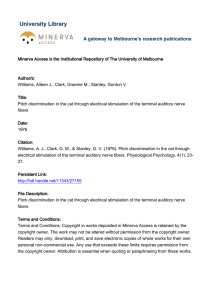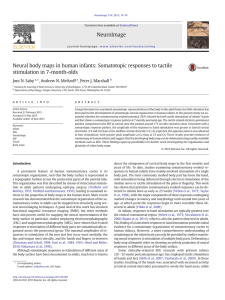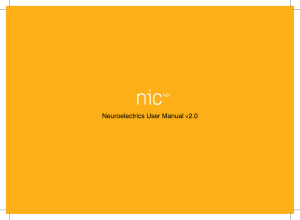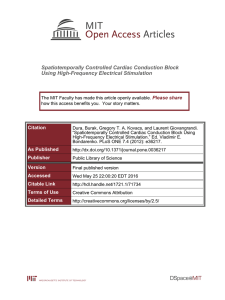How the Brain and Its Disorders Can Be Studied
advertisement
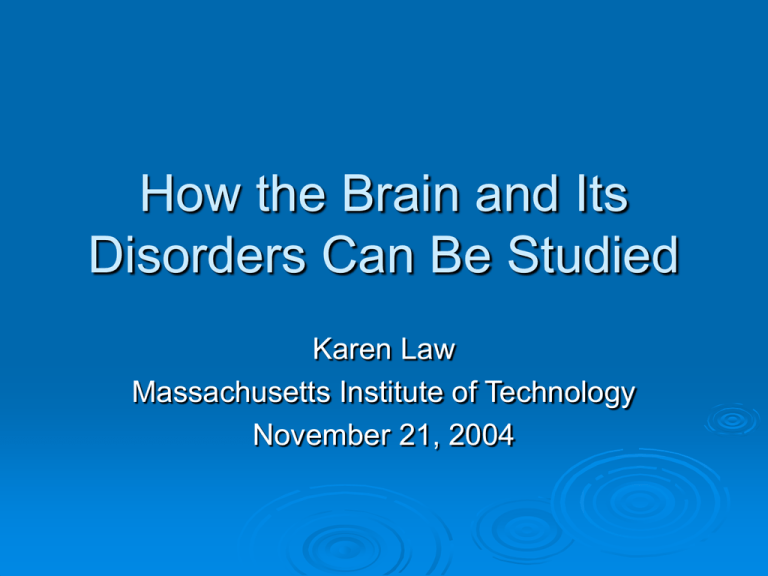
How the Brain and Its Disorders Can Be Studied Karen Law Massachusetts Institute of Technology November 21, 2004 History of the Study of the Brain There evidence of brain surgery dating back to the Neolithic period (5000 BC) Trepanation – skull surgery Unearthed remains of successful brain operations found in France Franz Gall (early 1800’s) Phrenology – bumps of people’s skulls are related to their behavioral characteristics FALSE But an important concept that different areas of the brain are important in different functions Case Study: Phineas Gage (1848) First patient from whom we learned something about the relation between personality and the function of the front parts of the brain Phineas Gage was the foreman of a railway construction gang. On September 13, 1848, an accidental explosion of a charge he had set blew his tamping iron through his head. The tamping iron was 3 feet 7 inches long and weighed 13 1/2 pounds. The tamping iron went in point first under his left cheek bone and completely out through the top of his head, landing about 25 to 30 yards behind him. Amazingly, he still remained conscious and physically recovered. Before the accident: capable and efficient foreman Well-balanced Shrewd, smart businessman Sociable After the accident: Fitful, disrespectful Profane Impatient and stubborn Unable to create and stick to future plans His friends said he was “No longer Gage.” Techniques to Study Brain Lesion Ablation Electric Stimulation Chemical Stimulation Lesion and Ablation Lesion – cut or abnormality in an area Phineas Gage Prefrontal lobotomy (1930) • If frontal lobes disconnected from rest of brain, violent or extremely emotional mental patients become calm • Negative effects: little or no emotion, no social inhibitions, trouble solving problems Broca’s (production of speech) Wernicke’s (understand speech) Ablation – surgical removal of area Electric Stimulation Tiny electrodes are implanted in the brain. There, they can deliver a very mild electric current that activates that area of the brain Experimental: applying a current to the appropriate area in a rat's brain causes the rat to become immediately aggressive. When the current stops, the aggression stops. Olds and Milner (1954) found they could cause rats to press a bar to deliver electrical stimulation to their brains. When the electrodes were implanted in the proper place in the brain, rats would continue to stimulate themselves for hours. Treatment: Depression Chemical Stimulation Similar to electrical stimulation, except that instead of an electrode, a small tube, a cannula, is inserted into the brain. Then, chemicals, usually crystalline forms of neurotransmitter, are introduced into the tube to stimulate the brain at the point at the end of the cannula Recording Techniques Single Cell measures the output of just one neuron. a small recording electrode is inserted into the axon of a neuron. Then, that electrode transmits that cell's activity. the activity consists of a series of discrete, similar pulses. Electroencephalogram (EEG) records from multiple points on the scalp simultaneously. recording the activity of billions of neurons simultaneously. the output of the EEG is a complex curve. research using this technique has proven especially helpful in studying sleep and wakefulness Fig 2. EEG recorded waves Fig 1. EEG cap Biochemical Techniques Biochemical techniques are used to map out the various neurotransmitter systems in the nervous system. Depression, for example, can be linked to levels of neurotransmitter, and drug therapy for depression alters those levels. Imaging Techniques Computerized Axial Positron Emission Tomography (PET scan) Magnetic Tomography (CAT scan) Resonance Imaging (MRI) Functional Magnetic Resonance Imaging (fMRI) CAT Scans Uses X-rays to create images with the aid of a computer to generate cross-sectional views of anatomy It can identify normal and abnormal structures and be used to guide procedures. CAT scanning is painless. Iodine-containing contrast material is sometimes used in CAT scanning. Fig 4. This CAT scan shows a tumor found in the left hemisphere of a 78 year old man (left). The tumor was taken out surgically (center). The last scan was taken after ten weeks of recovery from surgery (right). PET Scans Measures the brain’s metabolic activity Uses small amounts of short lived radioactive glucose (sugar) as a tracer Fig 3. PET scans show the decline in metabolic activity in an Alzheimers’s brain (right) compared to a normal brain (left) MRI Images internal structures of the body and brain using magnetism, radio waves, and a computer. The image and resolution of structures and soft tissue is very detailed. An MRI is painless and has the advantage of avoiding x-ray radiation exposure. No known risks. fMRI Measures change in brain activity in real- time. Relies on the different properties of oxygenated and deoxygenated blood. Regions of color show increased blood flow to those areas of the brain, showing more activity Other ways to study the brain Transcranial Magnetic Stimulation (TMS) Staining techniques To determine the structure of neurons and tissue layers Nissl stain Golgi stain Brains are Cool!! Any Questions?







